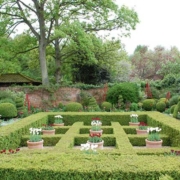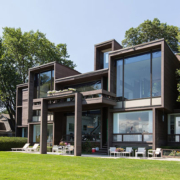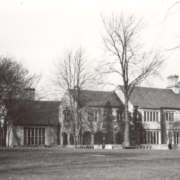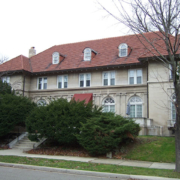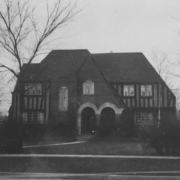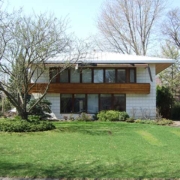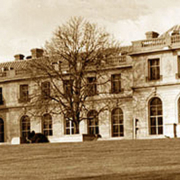Historical Architecture of Grosse Pointe – From Across The Pond – An English Country Garden, West Green House.
England is as well known for its wonderful gardens, as it is for its stately homes, castles and palaces.
From rolling parklands, working kitchen gardens, informal and formal estates, while a few are as well known as Kew Gardens, some of the finest are located in picturesque little villages.
West Green House and Gardens is a quintessentially English manor house garden with a twist. The formal garden combines neo-classical style with Chinese influences, along with a dash of the contemporary, and it is quite beautiful.
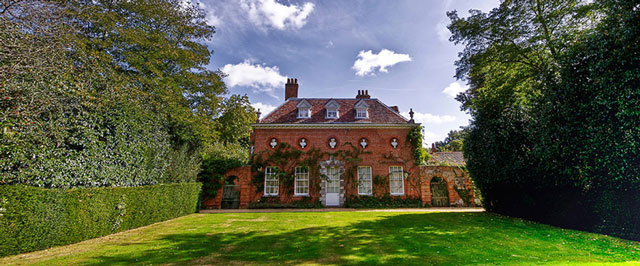
The house and gardens are located in the small village of Hartley Wintney, in the county of Hampshire, around 50 miles south of London. General Henry Hawley built the country house in the 1720’s, as with so many older homes part of the house was remolded several years later (at the beginning of the 20th Century), which included the gardens being redesigned.
Over the years the respected owners and tenants who have lived at West Green House continuously improved the grounds, including the Duchess of Wellington who worked tirelessly to perfect the gardens in the middle of 20th Century. After her death the house was sold to Sir Victor Sassoon who then left property to the National Trust in 1957.
In 1976 Lord McAlpine – a British businessman, politician, author and an advisor to Prime Minister Margaret Thatcher – acquired the lease to the residence. After several years of neglect Lord McAlpine restored the grounds once more and added several monuments designed by the classical architect Quinlan Terry.
Lord McAlpine left the property in 1990. After 2 years of the house being empty world-renowned garden designer – Australian Marylyn Abbott – moved in to the property in 1993, thereby taking control of both the house and the gardens. Since her arrival, she has once again transformed the gardens, meticulously restoring them to reflect the beauty of how they were in the 18th century.
Abbott set about creating an exciting architectural statement within the original walls of the property, creating formal gardens with some wonderfully intriguing features, uniquely colored plant combinations and ornamental fruit cages. The gardens reflect the historic mood of the house, featuring apple trees, annual flowers, and traditional box in several unique formations, along with several stunning water features and magnificent perennial borders.
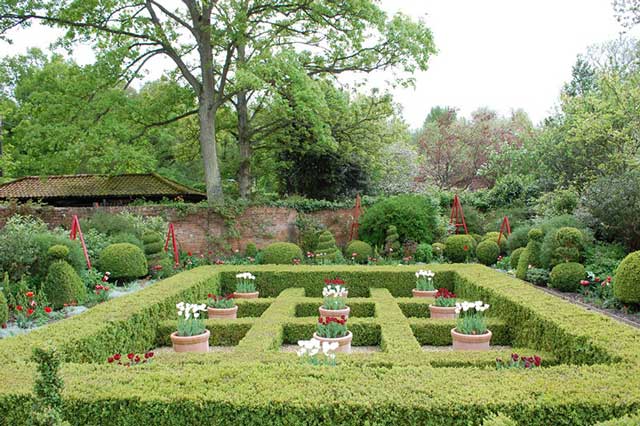
One of the key features of the garden is the moon gate, which circles the Nymphaeum, and encompasses a beautifully decorative water feature. Moon gates provide a circular opening in a garden wall to create a pedestrian passageway. They were a traditional architectural element in Chinese gardens, providing many spiritual meanings for each and every piece of tile on the gate and on the shape of it.
Beyond the moon gate is a woodland glade leading to a terraced Theatre Lawn and a small lake crossed by a Chinoisire (French for Chinese-esque) inspired Bridge, which displays Chinese influences’.
The garden is also filled with many superb hidden details. Gateways suggest a secret garden, revealing a new world behind the walls, and arched doorways offer a pathway to additional adventures.
The formal gardens offers a glimpse to the wonderful gardens of the past, when box hedges were used as the key feature to the design, creating playful formations and decorative shapes in which to contain fruit trees, evergreens, and floral combinations.
West Green House is a superb example of a classical English country garden and aside from the wonderful monuments, flowers and fruit trees that are on display it also provides a picture perfect setting for a spot of afternoon tea. And there is nothing more English than that.
Written by Katie Doelle
© 2015 Katie Doelle

